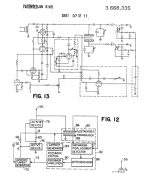The conditions:
New recording studio construction, all audio circuits are IG receptacles with home runs to IG bus at main panel, which then goes / is bonded to the system ground rods..of which there are 2 per LA city code.
Single phase 200 amp service
Each studio room has 2-3 IG circuits and 1 dirty power circuit. All circuit routing are home runs via EMT from the panel to a main pull box in each room, then from there we used HCF MC to all of the IG circuit receptacles, all of the isolated grounds are separated per circuit in the pull box so there is no cross wiring between each other or the HCF and dirty power system grounds.
The approximate distances between all of the IG home runs and the main panel / IG buss are all similar, like, within 15-25 ft max difference, but across a 4000 sq ft building.
The Problem:
When connecting an audio channel through 2 or more piece of gear plugged in to AC power within any single room, regardless of if they are on different circuits / phases / etc, there is no noise, however as soon as an audio signal is run between two devices which are connected to AC power in different rooms, there is significant 60hz hum.
What we have tried/tested already:
- Tested devices on different IG circuits which are on the same phase/leg but in different rooms - 60hz hum
- Tested devices on different IG circuits which are on different phases but in the same room - no hum
- Bypassed all in-wall audio cabling and ran directly between devices in different rooms - 60hz hum
- Lifted either audio or AC ground at one end when going between rooms - no hum (but neither are viable actual solutions of course).
- Connected devices to the "Dirty" power circuits in the same room - no hum
- Connected devices to dirty power in different rooms - noticeably louder 60hz hum than the IG circuits
The thing I cant wrap my head around is why there is no issue / hum when different devices are connected to different circuits/phases within the same room, but as soon as we move to a different room its a problem. Again, as all of the circuits going to each room are home runs back to the panel there isn't a huge disparity in wire length for the isolated (or system) grounds.
Any ideas or suggestions would be great. as this is a newly built commercial facility the client wants to figure out a permanent solution which wont require using any device to lift grounds either ac or audio when connecting between rooms.
).

